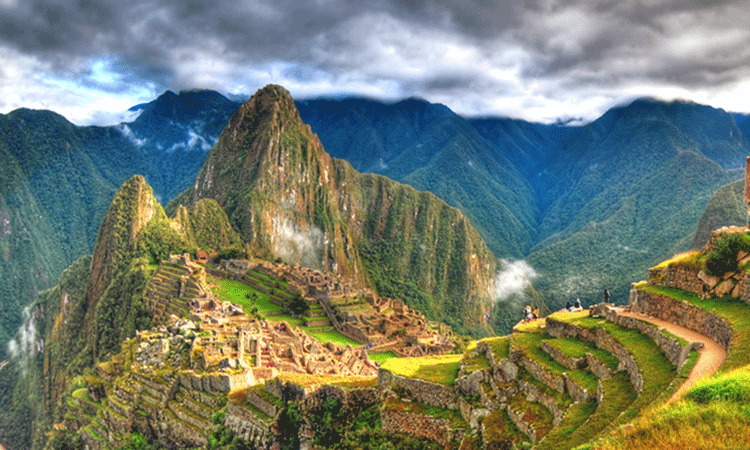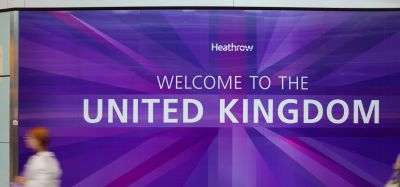Sustainability Series: Is a new airport what Peru needs?
- Like
- Digg
- Del
- Tumblr
- VKontakte
- Buffer
- Love This
- Odnoklassniki
- Meneame
- Blogger
- Amazon
- Yahoo Mail
- Gmail
- AOL
- Newsvine
- HackerNews
- Evernote
- MySpace
- Mail.ru
- Viadeo
- Line
- Comments
- Yummly
- SMS
- Viber
- Telegram
- Subscribe
- Skype
- Facebook Messenger
- Kakao
- LiveJournal
- Yammer
- Edgar
- Fintel
- Mix
- Instapaper
- Copy Link
Posted: 6 September 2019 | Eve De Clerk (International Airport Review) | No comments yet
Erecting an airport at an UNESCO world heritage site seems more than slightly counter-intuitive and the current construction work in Peru forces us to question if aviation is in fact sustainable.


Peru’s President, Martín Vizcarra, has announced that despite protests, the development of a new airport in northern Peru – on the border with Ecuador – will continue to go ahead. Work to prepare the area for construction has begun and millions of tonnes of earth have been cleared in Chinchero to make way for the work.
Vizcarra said: “We have to prioritise the construction of a regional airport for Amazonas. In September 2019, a high-level commission from the Ministry of Transportation and Communications will come to the region with Corpac [Peruvian Corporation of Commercial Airports and Aviation] technicians to evaluate the various alternatives.”
The President also suggested that the airport would not only improve access for tourists to the region, but that it would increase the services for locals.
However, many are asking how this development can be anything other than a bad idea.
The international protests have been spearheaded by a petition from Natalia Majluf. The petition stated: “The airport designed in the town of Chinchero is a serious threat to the conservation of one of the most important heritage sites in the world. In addition to affecting the integrity of a complex Inca landscape, building an airport around the Sacred Valley will have irreparable effects due to noise, increased traffic and uncontrolled urbanisation. We invoke the President and the government of Peru to reconsider this project.”
The construction of the airport began early in 2019, and once complete, the airport will be the second-largest in Peru with a terminal that accommodates over seven million passengers.
The existing airport, who’s location is far from ideal, is not capable of handling the rising passenger demand and will reach capacity within three or four years time.
Despite the benefits that the construction project will bring, such as an increase in jobs to the region and new housing for those in need, critics are concerned of the impact low-flying planes could have upon the remains of the Inca civilisation. The Guardian reported: “Others worry that construction would deplete the watershed of Lake Piuray, which Cusco city relies on for almost half its water supply.”
The construction itself has already caused a stir among contractors with firms from South Korea and Canada already queuing for a piece of the profits.
Peru’s Finance Minister, Carlos Oliva, said: “This airport will be built as soon as possible because it’s very necessary for the city of Cusco. There’s a series of technical studies which support this construction.” This was reinforced by statements from the President, who said: “There are evaluations and studies that have been done for 15 years. This is not an improvisation. Chinchero Airport is going.”
Guillermo Cortés, Vice Minister of Cultural Heritage and Cultural Industries of the Ministry of Culture, told El Comercio that the Chinchero Airport project is not just of national interest but is what the people of Cusco require. He said: “It is a project of many years, for which all the studies have been carried out. It will solve the problem that is present with the Velasco Astete Airport and projects an important growth of the tourist activity of Cusco.”
Jean Pierre Crousse, co-Founder of Lima firm Barclay & Crousse, told Dezeen: “The museumification process of a living cultural landscape and the consequences of the loss of ancestral knowledge in managing water, agriculture, sustainable production and occupation of the land, as a consequence of profit-guided, short-term decisions, as well as the absence of a holistic vision, is far more harmful than the airport alone, which is only a logical outcome of this misunderstanding.
“The recent movement against the construction of the airport has valid arguments in abstract terms, but it comes at least four years too late, when the process is practically irreversible.”
The UNESCO world heritage site already witnesses 1.5 million visitors each year, more than double what UNESCO recommends, and the addition of more will cause unfathomable damage to the ancient structures. The locals are protesting the irony, that this construction project is destroying the attraction the additional tourists are being shipped in to see.
Related topics
Airport construction and design, Sustainability, Sustainable development
Related airports
Related organisations
Related regions
Related people
Carlos Oliva, Guillermo Cortés, Jean Pierre Crousse, Martín Vizcarra, Natalia Majluf


















